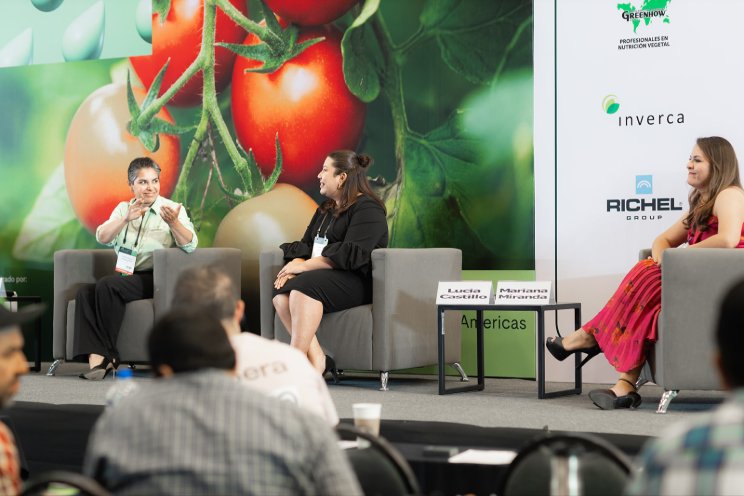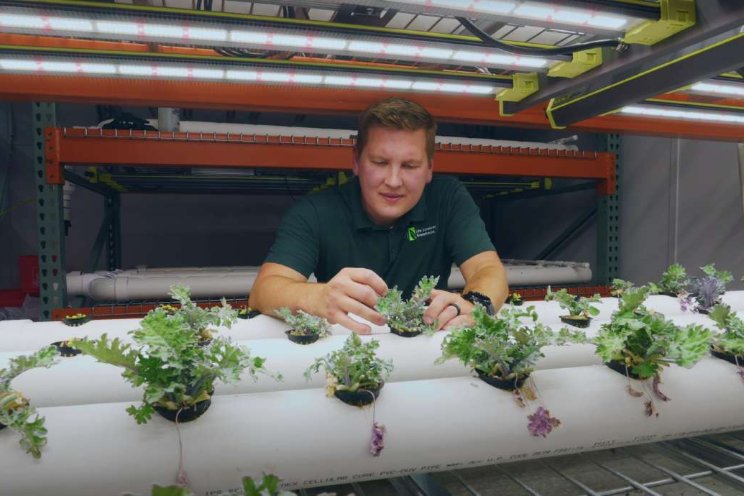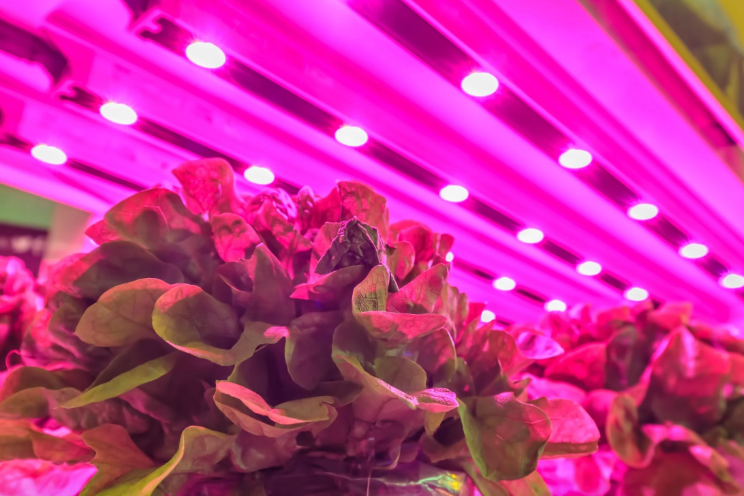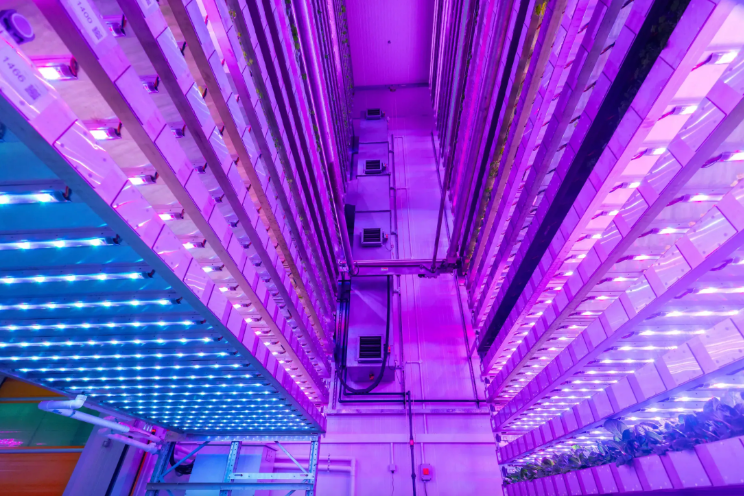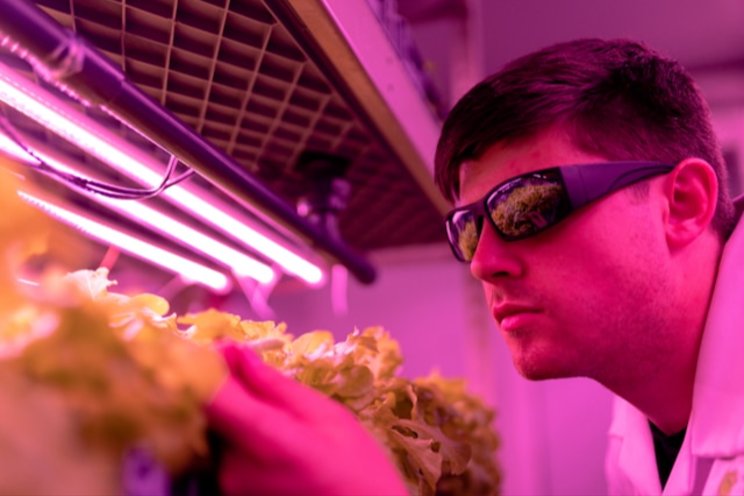Lincoln's red-light district…for plants
Added on 20 January 2020
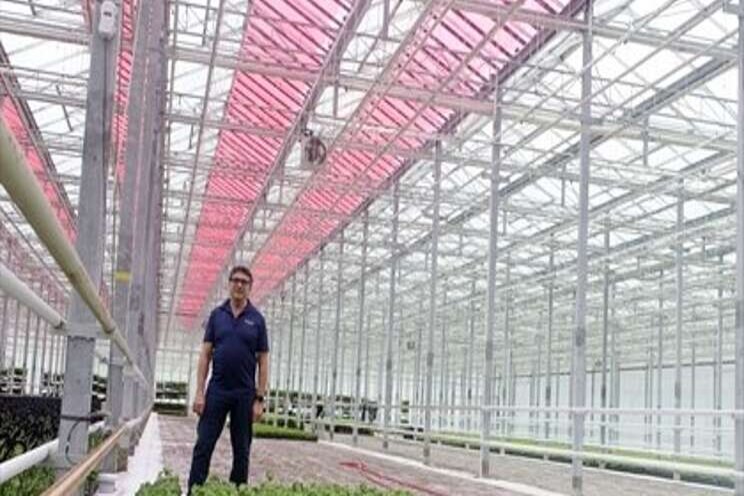
The Lincoln greenhouse,known for its potted herbs that consumers can buy at grocery stores and other retailers, installed these special panels over a half-acre of its 15-acre facility last year. The early results seem promising, said the company's research and development manager.
"It could be incredible," Marco de Leonardis said.
The results so far suggest Freeman Herbs could scale up and produce all its required electricity onsite using solar panels.
"We could actually sell electricity (back to the grid) or increase the number of lights," he said about the possibilities. Increasing production might make more sense for them, though.
"We're not here to sell electricity, we're here to sell plants."
The panels combine some nifty physics with biology to ensure the plants still receive the required sunlight, despite the fact some of it is being absorbed by the photovoltaic cells.
The trick lies in the fact that plants mostly require light on the red end of the spectrum. While it uses light at other frequencies, it requires much less of it.
So what the panels do is convert the light to the red end of the spectrum. That light is absorbed by the plants to offset the light directed to the photovoltaic cells to produce electricity. The cells absorb light directly from the sun -- as well as from underneath where the red polyurethane back-sheet focuses the red light on the plant -- and reflects the rest to the electricity producing cells.
Ontario manufacturer Heliene produced the panels and sought greenhouses to test the panels. The trial at Freeman Herbs is part of the project, funded through a Greenhouse Renewable Energy Technologies grant. Heliene installed sensors to monitor the plant growth, and while those results haven't been released, de Leonardis said the eye test looks promising.
"This pilot is demonstrating that both crops and solar energy can be harvested from the same land footprint using our technology, offsetting the need to generate power using fossil fuels and lowering carbon emissions from the greenhouse sector," said Scott McLorie, vice-president of business development at Heliene.
The one caution de Leonardis provides, though, is that the requirements for their plants are different from other greenhouses. Growing smaller compact herbs means they're not as concerned about stem strength, for instance. His next step is to test other plants, like tomato plants, to see how they respond. It ties in with the company's push to offer potted vegetable plants to consumers.
Niagara College has also been involved with the testing, running a trial that includes 600 panel modules and comparing growth. Heliene has two cell arrangements for the panels, a checkerboard of cells and red-light back-sheeting and a stripe pattern that has one strip of cells running through the middle of the panel.
Heliene says an unexpected side benefit is that the red light seems to hinder the growth of thrips, a known greenhouse pest.
"We're very encouraged by the results so far, both the beneficial growth of the crops underneath the panels and the electricity that is being generated," McLorie says. "We're using waste light to make environmentally friendly energy, which will lower production costs for growers."
Installing the panels remains a costly project, something de Leonardis hopes will change as the technology improves. McLorie acknowledged price can be a barrier.
"There is always hesitancy to do a big spend on something unknown, but this project can help remove some of those barriers by proving the technology can work on a commercial greenhouse scale," he said.
For de Leonardis, it's just one of many techniques and technologies the company employs to improve efficiency and the end product. Freeman Herbs uses dynamic LED lighting to improve taste in their plants, and is testing a dehumidifier that uses a salt brine to filter moisture out of the air, along with nanobubble technology that allows them to be much more efficient in water treatment.
Source and photo courtesy of Niagara This Week
Source: Niagara This Week
More news


